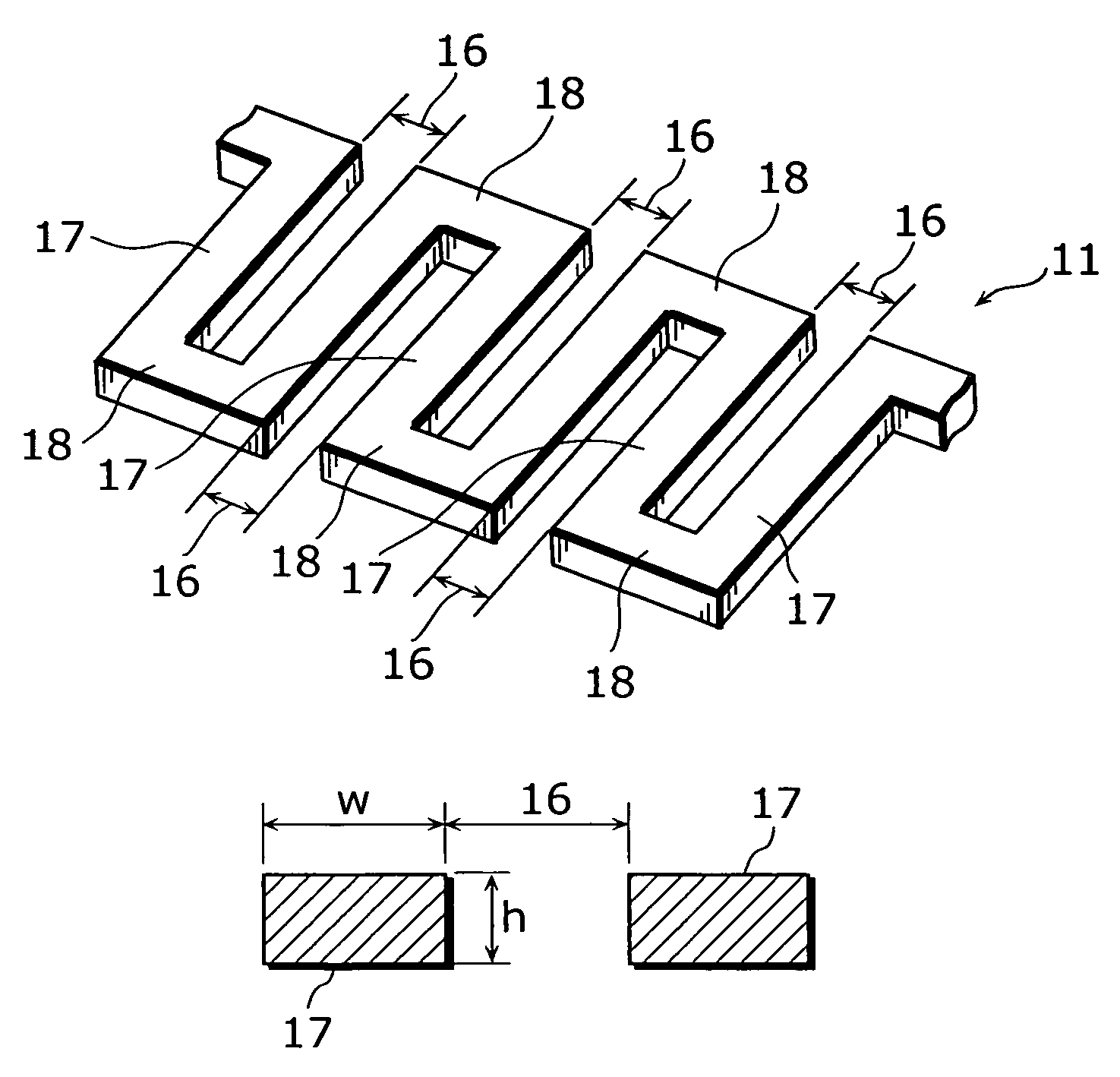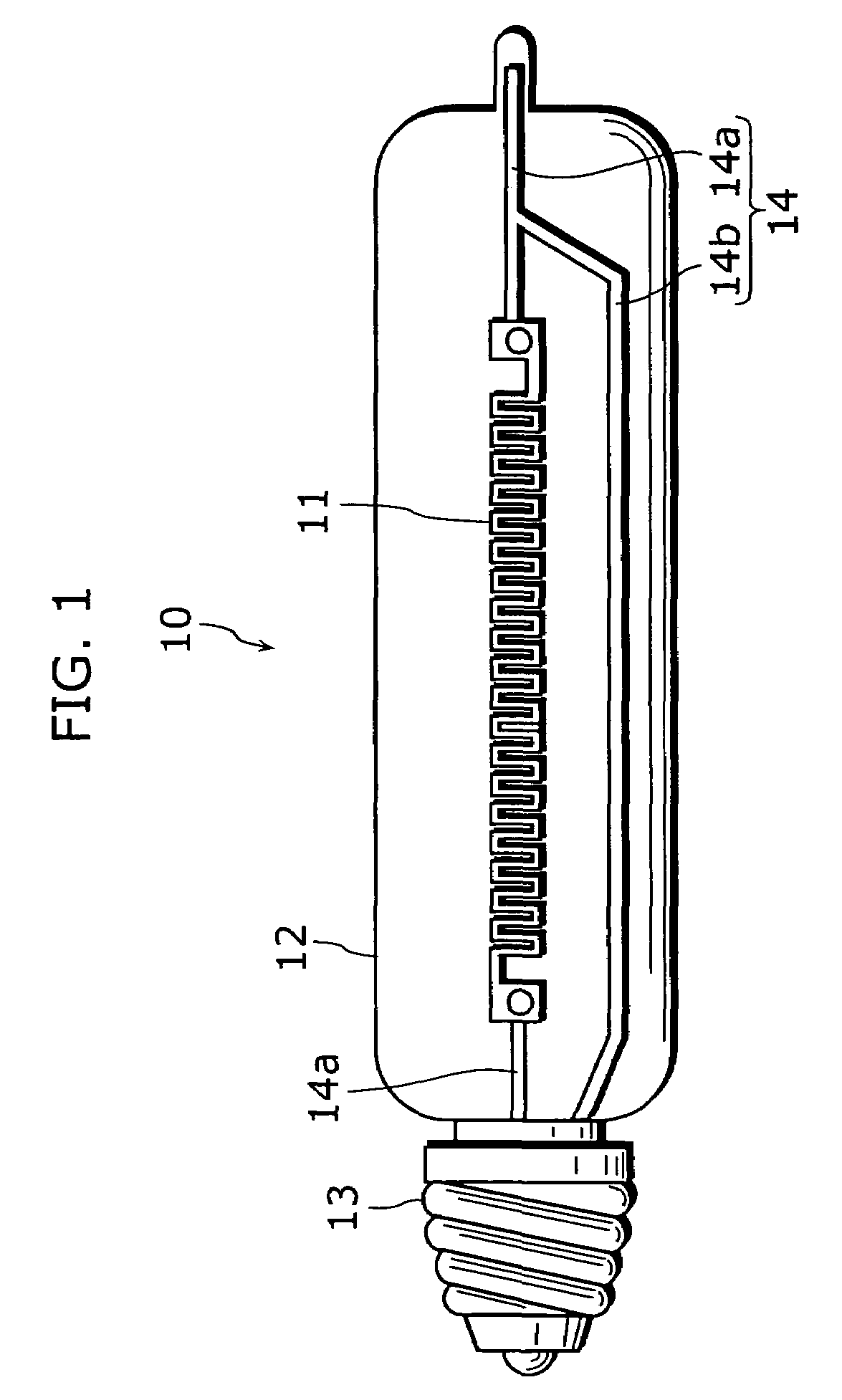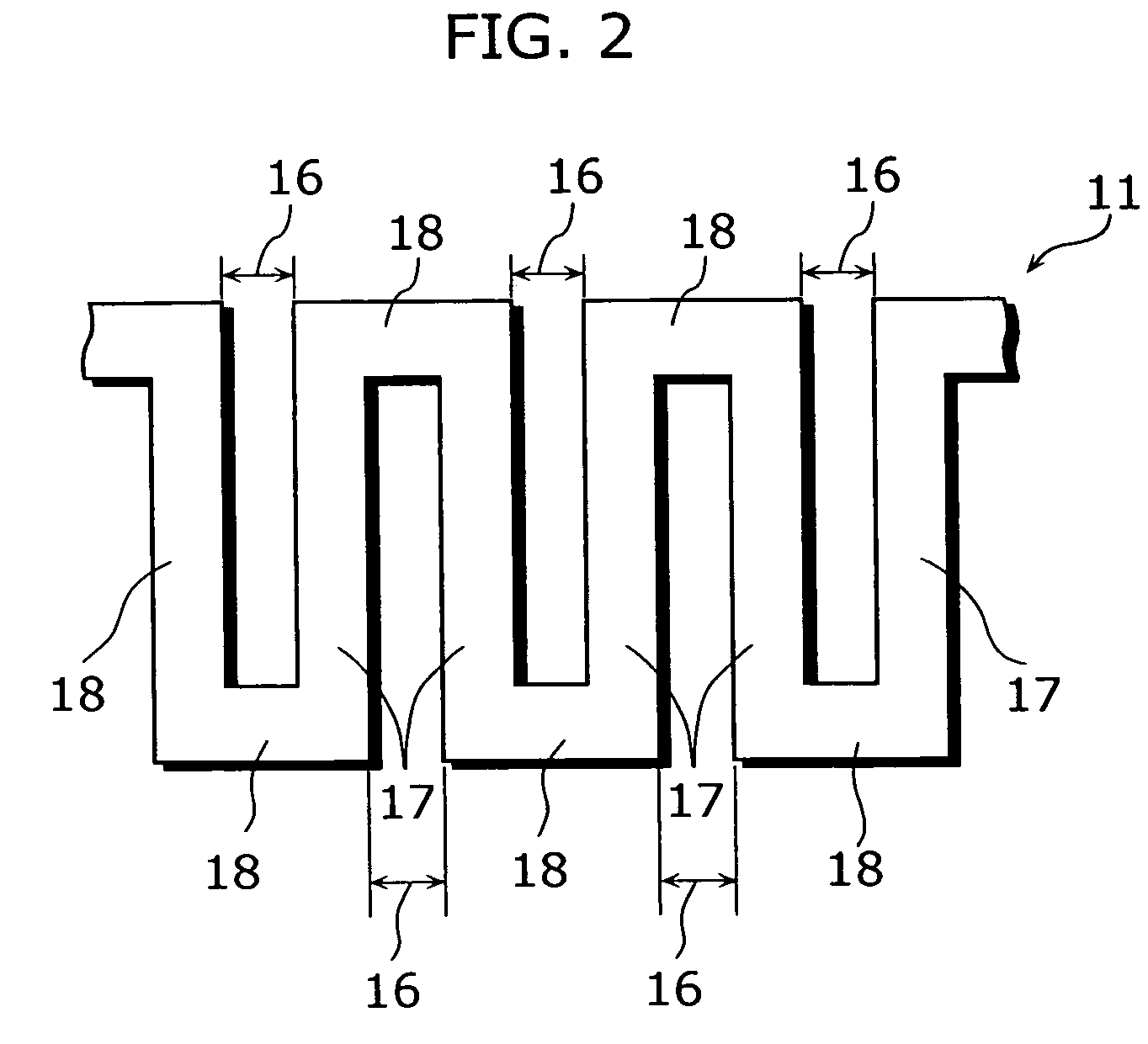Incandescent bulb and incandescent bulb filament
a technology of incandescent bulbs and filaments, which is applied in the direction of discharge tubes/lamp details, discharge tubes/lamp details, incadescent body mounting/support, etc., can solve the problems of low lamp efficiency of only about 13 im/w, lower lamp efficiency, and element b>50/b>′ which does not allow the surface temperature to be maintained constant, etc., to achieve high lamp efficiency
- Summary
- Abstract
- Description
- Claims
- Application Information
AI Technical Summary
Benefits of technology
Problems solved by technology
Method used
Image
Examples
first embodiment
[0047]A description of the first embodiment is given below with reference to the diagrams.
[0048]In the present embodiment, the structure of an incandescent bulb 10, each filament space 16, and relationship between each filament space 16 and a relative proportion of a gas filled into a bulb 12. FIG. 1 is a schematic diagram of an incandescent bulb 10 in the present embodiment and a perspective view of the bulb 12 made of glass. FIG. 2 is an enlarged view of a part of a filament 11 of the present embodiment. FIG. 3 is a perspective view showing the part of the filament 11.
[0049]First, the structure of the incandescent bulb 10 is described.
[0050]As shown in FIG. 1, the incandescent bulb 10 includes the filament 11 made of a thin film, the bulb 12 provided so as to envelop the filament 11, a noble gas (not shown in the diagram) filled in the bulb 12, a base 13 provided so as to close up the opening of the bulb 12, a lead-in wire 14 which is provided in parallel to the longitudinal direc...
second embodiment
[0086]A description of the second embodiment is given below with reference to the diagrams.
[0087]In the present embodiment, a description is focused on the structure of an incandescent bulb 20. FIG. 6 is a schematic diagram showing a perspective view of the incandescent bulb 20 in the present embodiment when viewed through the glass that forms a bulb 22. FIG. 7 is an enlarged view of a filament 21 in the present embodiment.
[0088]Differently from the incandescent bulb 10 in the first embodiment, the incandescent bulb 20 in the present embodiment includes the filament 21 having a round shape appearance, and therefore the shapes of the bulb 22 and the lead-in wire 24 are different from those of the first embodiment. Everything else is identical to the incandescent bulb 10 and the filament 11 in the first embodiment. Therefore, a detailed description of the overlap between these embodiments is not repeated here.
[0089]As shown in FIG. 6, the incandescent bulb 20 includes the filament 21 ...
third embodiment
[0098]The incandescent bulb in the present embodiment is an incandescent bulb including a filament having microcavities. Before describing the present embodiment, a description of a microcavity is given.
[0099]Patent Document 1 discloses a method for increasing selectivity of wavelengths of electromagnetic radiation from a filament, namely, for preventing infrared radiation, by forming microcavities, as a means for increasing the lamp efficiency of an incandescent bulb, on the surface of the filament that is the light-emitting surface and using a quantum effect of these microcavities. In this method, a microcavity is a square column in shape having a square bottom with a length of each side of about the wavelength of visible light and a depth longer than the wavelength of visible light (See Patent Document 1). Patent Document describes as follows. For example, if the surface of the filament has microcavities each having a square bottom with a side length of 350 nm and a depth around ...
PUM
 Login to View More
Login to View More Abstract
Description
Claims
Application Information
 Login to View More
Login to View More - R&D
- Intellectual Property
- Life Sciences
- Materials
- Tech Scout
- Unparalleled Data Quality
- Higher Quality Content
- 60% Fewer Hallucinations
Browse by: Latest US Patents, China's latest patents, Technical Efficacy Thesaurus, Application Domain, Technology Topic, Popular Technical Reports.
© 2025 PatSnap. All rights reserved.Legal|Privacy policy|Modern Slavery Act Transparency Statement|Sitemap|About US| Contact US: help@patsnap.com



